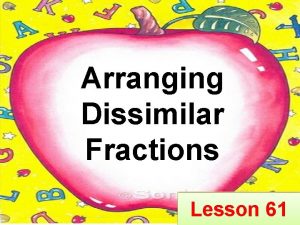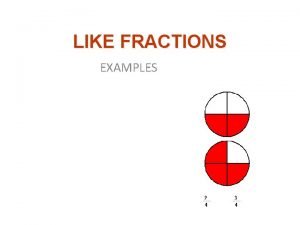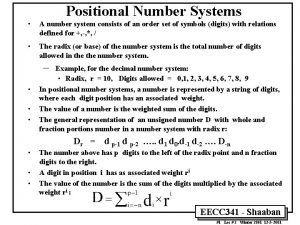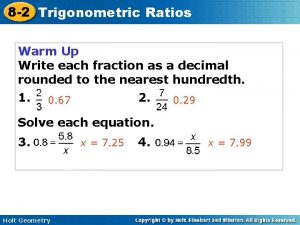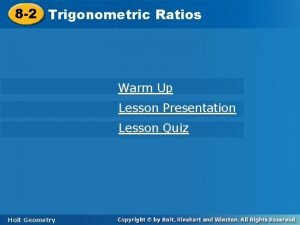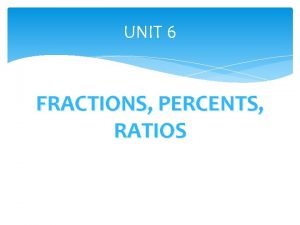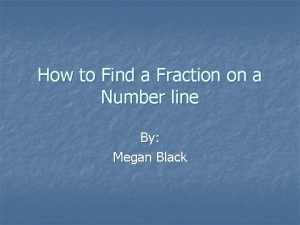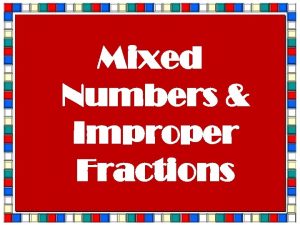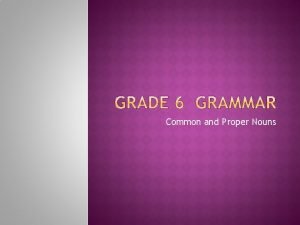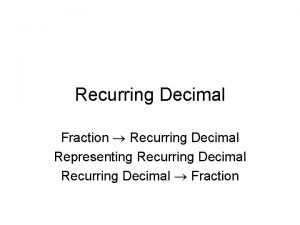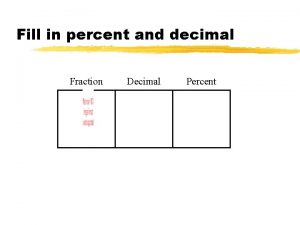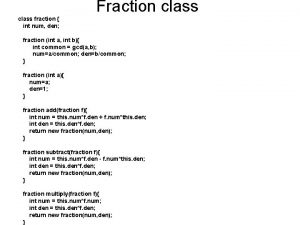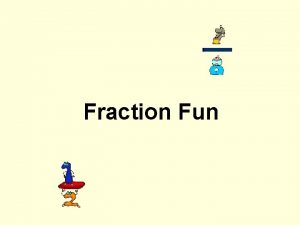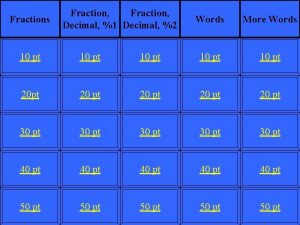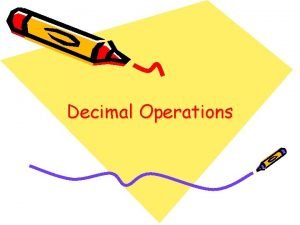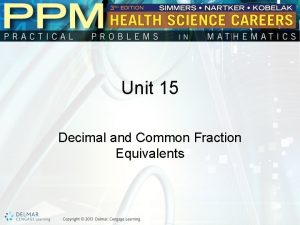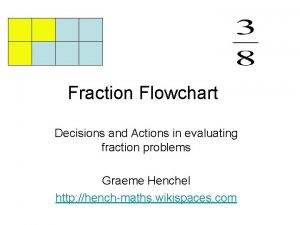L I To identify common fraction decimal and













- Slides: 13

L. I. To identify common fraction, decimal and percentage equivalents What fraction of the 100 square has been coloured in green? 50/100 = 5/10 = ½ Can you write ½ as a decimal and as a percentage? 0. 5 50%

L. I. To identify common fraction, decimal and percentage equivalents How could we use the same diagram to show ¼? Can you write ¼ as a decimal and as a percentage? 0. 25 25% Because 25 out of 100 (25/100) squares have been shaded in!

L. I. To identify common fraction, decimal and percentage equivalents Trick question: they both do! This is because in both diagrams, 25 out of 100 (25/100) squares have been shaded in.

L. I. To identify common fraction, decimal and percentage equivalents Which fractions are being represented by the diagrams? Can you write them as decimals and percentages?

L. I. To identify common fraction, decimal and percentage equivalents 1/5 is shaded in because the 100 square has been divided into FIVE equal pieces. Therefore each piece = 1/5 th 20 out of 100 squares are shaded in. 20/100 = 1/5 20/100 = 20% 20/100 = 0. 2

L. I. To identify common fraction, decimal and percentage equivalents 10 out of 100 squares are shaded in. 10/100 = 1/10 10/100 = 10% 10/100 = 0. 1

Answer the question that is written in each box. Hint: it may help you to colour in 100 square diagrams. You can download a sheet on the website to do this on. To colour in squares on Microsoft Word, click in a square or highlight a row (by clicking and dragging) and click the fill button: Hint #2: work out how many squares are shaded in each line of the question. I’ll model the first one on the next page.

L. I. To identify common fraction, decimal and percentage equivalents ¼ = 25/100 = 25 squares 0. 5 = ½ = 50/100 = 50 squares 3% = 3/100 = 3 squares So 78/100 squares are coloured in, which means that 22/100 squares are uncoloured. Therefore 22/100 of the square is uncoloured.

Now try the other 5 questions.

13% 27/100 8% 10/100 1/10

25% is blue. So that means 25/100 squares are blue. 25 squares are blue. 20/100 squares are red. 20 squares are red. 0. 07 is blue. So that means another 7 squares are blue. 1/10 th of the square is purple. 1 x 10 = 10 10 x 10 = 100 So 10 squares are purple. 6/20 of the square is orange. 6_ x 5 = 30_ 20 x 5 = 100 So 30 squares are orange. 25 + 20 + 7 + 10 + 30 = 92 squares. 92/100 squares are coloured in. Therefore 8/100 squares are NOT coloured in. 8% of the square is uncoloured.

L. I. To identify common fraction, decimal and percentage equivalents Write the fraction and decimal equivalents of: 50% 25% 75% 20% 1%

 Pares ng fraction na magkatumbas
Pares ng fraction na magkatumbas Like fraction
Like fraction What is positional number system
What is positional number system How to convert recurring decimal to fraction
How to convert recurring decimal to fraction Write each fraction as a decimal
Write each fraction as a decimal Write each fraction as a decimal
Write each fraction as a decimal What is 2/10 equivalent to
What is 2/10 equivalent to 4 operations of decimals
4 operations of decimals How to convert fractions to decimals
How to convert fractions to decimals Mathsnacks.com ratio rumble
Mathsnacks.com ratio rumble How do you find a fraction of a number
How do you find a fraction of a number Mixed fraction to improper fraction
Mixed fraction to improper fraction What is the common denominator of in the complex fraction ?
What is the common denominator of in the complex fraction ? Paragraph for common and proper nouns
Paragraph for common and proper nouns
